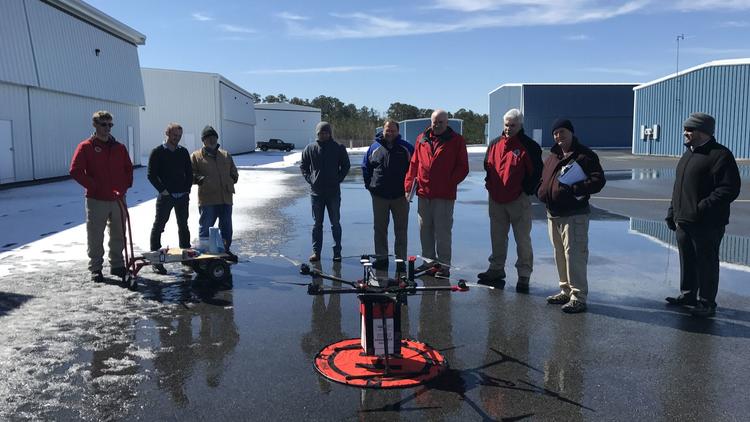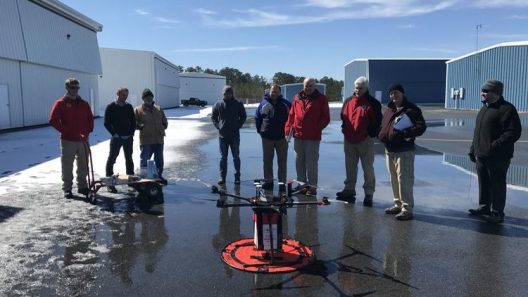Meredith Cohn of the Baltimore Sun reported, “The first-ever organ delivered by drone was transplanted into a patient with kidney failure at the University of Maryland Medical Center, capping more than three years of work to show unmanned aircraft can safely transport life-saving organs and tissue.”
Note one doctor in the video, making a homage to Apollo 11: “One small hop for a drone, one major leap for medicine.” Note the cheers of waiting personnel when the drone lands successfully.
As reported in Aero-News Network, “On Friday, April 19th, at approximately 12:30 am, a human donor kidney was loaded onto the UMMC drone. The flight, led by the University of Maryland UAS Test Site at St. Mary’s County, commenced at 1:00 am. The vehicle traveled 2.6 miles and flew for approximately 10 minutes. The human kidney was successfully delivered to University of Maryland Medical Center (UMMC) and was scheduled to be used for a transplant surgery at 5:00 am.”
Cohn reports that Dr. Joseph Scalea, a UMMMC transplant surgeon, was frustrated by the slowness and costs of relying on commercial flights and charters. Researching “faster means,” he found drones offered possibilities.
At a news conference, Scalea explained, “This new technology has the potential to help widen the donor organ pool and access to transplantation. Delivering an organ from a donor to a patient is a sacred duty with many moving parts. It is critical that we find ways of doing this better.”
Aero-News explains the urgency: “Organ transplants have a limited window of cold ischemia time (CIT) in which an organ can be chilled and then have blood supply restored. As of January 2019, almost 114,000 individuals were on the national transplant waiting list and every day approximately 80 people receive organ transplants, according to the United Network for Organ Sharing – the nonprofit that manages the transplant system. For sensitive medical deliveries, reducing the amount of travel time in urban settings, as well as vibration during travel can help lead to better outcomes.”
Cohn’s story highlights the need for timely and safe delivery. She reports that a human heart was left on a [airliner] and when retrieved, fortunately had valves still usable.
The Sacramento Bee reported, “More than an hour into the connecting flight to Dallas, the pilot turned around, leading to a five-hour delay for passengers.
“In a statement, [the airline] said, “the shipment was delivered to its destination within the window of allotted time by our cargo customer. Nothing is more important to us than the safety of our customers and the safe delivery of the precious cargo we transport every day.”
“Valve tissue has a 48-hour window of viability. Amazingly, the heart made it in time to save the life of its intended recipient.” Protocols and procedures to prevent this type of admittedly rare slip-up will probably be a high priority for future organ deliveries.
AiRXOS, a unit of GE Aviation that participated in the demonstration reported, that the organ was flown 2.6 miles in 10 minutes across Baltimore from St. Agnes Hospital to the Maryland hospital downtown in the early morning for the transplant. Such a trip takes 15-20 minutes by car depending on traffic.
Seeing other countries with transportation infrastructure gaps that manage to deliver blood, retrieve tests and samples, and deliver life-saving drugs and equipment over impassable terrain should give us hope. We can hope that drones will make it possible to speed necessary medical treatments and transplants while avoiding the gridlock of our extremely well-developed infrastructure.


